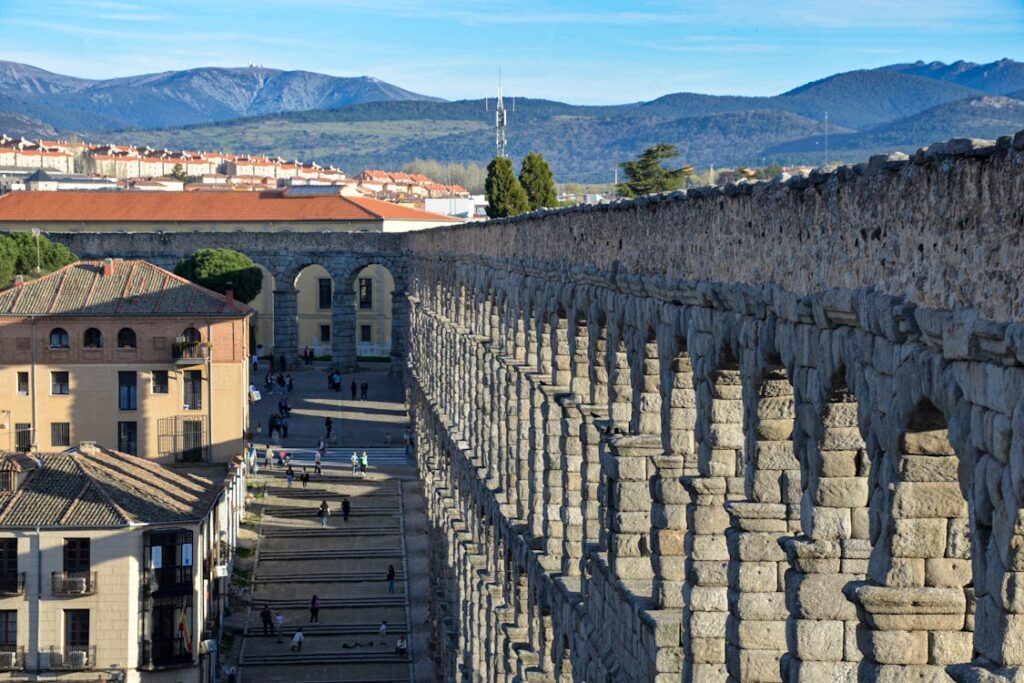The Roman aqueducts were an advanced water supply system that used a vast network of pipes, tunnels, bridges, and canals to transport fresh water from distant sources, such as lakes or springs, to densely populated areas by gravity. The first aqueduct was built in 312 BCE, and the Romans constructed hundreds more across their empire to sustain its growing population.
They transformed urban living by reducing reliance on local wells, which were often contaminated. These systems supplied a reliable flow of clean water, which was used for drinking, gardening, milling, and farming, and to supply hundreds of public fountains. They also supplied grand public bathhouses, enhancing the Roman society’s quality of life and social interactions.
The Roman aqueducts improved public health, and enabled better sanitation, contributing to the empire’s prosperity. Even after Rome’s fall, many aqueducts remained in use for centuries. Their innovative engineering set the foundation for modern water systems, emphasizing the ongoing need for sustainable solutions in expanding cities.
Today, their preserved sections can be found across Europe, North Africa, and the Middle East, showcasing their lasting impact.


